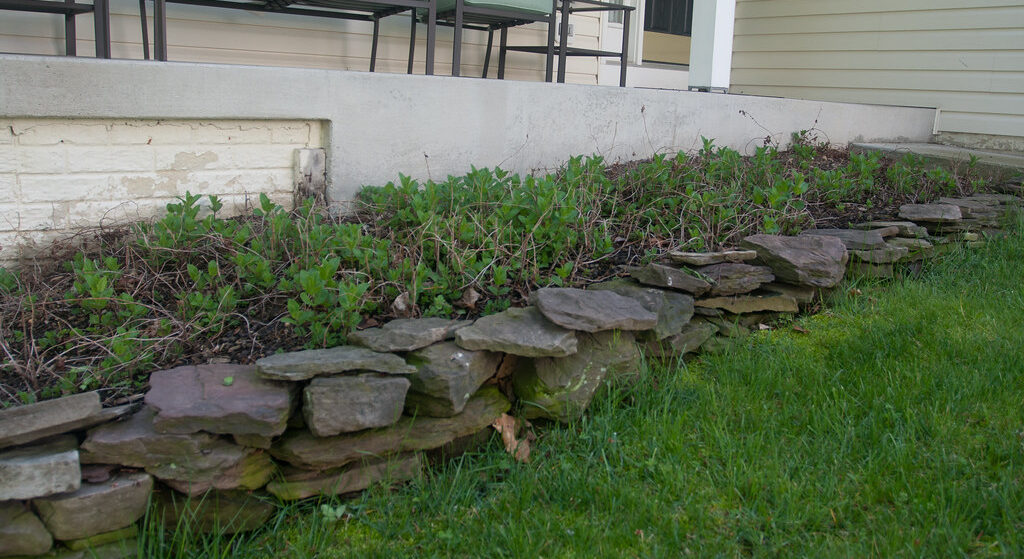There’s something undeniably thrilling about breaking the rules, especially when it comes to your own slice of the great outdoors. You’ve decided to commit what some gardeners might call ‘the sin’: planting mint with wild abandon in your yard. But let’s be clear, this is no ordinary act of horticultural defiance. This is a dream come true, a fragrant fantasy brought to life, and a bold statement that says, ‘I will have my mint, and I will have it everywhere!’
The Allure of Mint and the Challenge of Companion Planting
The mint plant, with its vivacious growth and invigorating aroma, is often relegated to the confines of a pot, restrained and controlled. But not in your garden. No, you envision a verdant expanse of mint, a lush carpet of green that tickles the senses and transforms your yard into an aromatic haven. And why not?
Mint is not just a plant; it’s a statement. It’s a testament to abundance, to nature’s relentless drive, and to the joy of embracing the wild side of gardening. And as you stand on the brink of this minty precipice, ready to dive into a sea of green, you might wonder, ‘Is there anything else I can toss in the yard with it?’
The challenge, of course, is finding companions for your mint that can hold their own against this aromatic juggernaut. Mint is known for its assertive nature, its tendency to spread and take over, choking out the less assertive flora in its path. But fear not, for there are indeed plants that can stand toe-to-toe with mint, offering that ‘lil visual variation’ you crave without succumbing to the mint’s dominance.
First, consider the aesthetics. Mint’s vibrant green leaves provide a beautiful backdrop, but adding a splash of color could elevate your garden to a work of art. Think of flowers like marigolds or zinnias, which can add pops of yellow, orange, and red to your minty canvas. These hardy blooms are not easily deterred by the mint and can provide a visual feast for the eyes.
While mint’s leaves are soft and inviting, pairing them with plants that offer a contrasting texture can create a sensory delight. Lavender, with its silvery foliage and spiky flowers, not only holds its own against mint but also contributes to the olfactory experience with its calming scent. Together, mint and lavender can create a symphony of smells that transform your yard into an outdoor aromatherapy session.
What about the practicalities? Some gardeners might suggest herbs like oregano or thyme, which share mint’s hardiness and love for similar growing conditions. These culinary comrades can provide a practical purpose, turning your minty expanse into a veritable herb garden. Imagine stepping outside to snip a few sprigs of fresh herbs for your evening meal, surrounded by the intoxicating aroma of your minty paradise.
And let’s not forget about the pollinators. While mint is a magnet for bees and butterflies, adding plants like echinacea or bee balm can further support these vital garden visitors. These blooms not only withstand the mint’s assertiveness but also contribute to the health of your local ecosystem. It’s a win-win for you and the bees!
In your quest for a mint-filled yard, you’re not just planting a plant; you’re planting a dream. A dream of lush, fragrant growth that defies the conventional, that laughs in the face of the mundane, and that boldly declares, ‘I just want mint, guys.’ So go ahead, embrace your inner rebel, plant that mint, and watch as your garden becomes a testament to the beauty of breaking the rules.
As we wrap up this section, let’s remember that while mint might be the star of the show, it doesn’t have to be a solo act. With a little creativity and a willingness to experiment, you can curate a garden that’s as diverse as it is minty.

Exploring Suitable Companions for Mint
Diving into the world of companion planting, it’s essential to recognize that mint’s vigorous nature requires equally robust partners. These plants must not only survive but also complement the mint’s verdant sprawl. So, let’s embark on a horticultural adventure and discover the stalwart companions that will stand alongside your minty monarchy, adding that ‘lil visual variation’ and more.
When considering companions, it’s crucial to think about the different layers of your garden. Tall, sun-loving plants can rise above the mint, while ground-hugging varieties can add texture and color at the soil level. Sunflowers, with their towering stalks and bright, cheerful faces, can be a majestic backdrop to your minty ground cover. They’ll reach for the sky, providing a contrast in height and a feast for the eyes and the pollinators.
For a mid-level infusion of color and form, consider adding some culinary sages. With their variety of leaf hues—from green to purple—and their lovely blooms, sages can hold their own against the mint. Plus, they bring an additional herbal element to your garden, perfect for those who love to cook with fresh ingredients. Just imagine the burst of flavor from a handful of freshly picked mint and sage!
Ground covers that can coexist with mint are also a valuable addition. Creeping thyme is a fantastic option, as it can tolerate light foot traffic and offers a beautiful flowering display. Its tiny, fragrant leaves will intermingle with the mint, creating a tapestry of textures and scents underfoot. And let’s not forget strawberries, which can spread just as vigorously as mint. Their sweet red fruits will be a delightful surprise among the green.
For a touch of whimsy and movement, ornamental grasses can be a surprising yet fitting companion. Varieties like fountain grass or blue fescue can sway gracefully in the breeze, their plumes and blades dancing among the mint. These grasses can provide a soft, flowing contrast to the mint’s more structured form.
In the realm of vegetables, consider those that can rise above the mint, such as tomatoes or pole beans. These plants can be trellised, allowing them to soar upwards, away from the mint’s reach. Their vertical growth habit not only saves space but also adds another layer of interest to your garden tableau.
And let’s not overlook the importance of attracting beneficial insects. Companion plants like dill and fennel can draw in ladybugs and other predators that will keep pest populations in check. These aromatic herbs can flourish alongside your mint, creating a dynamic ecosystem that supports both your plants and the local wildlife.
As you curate your minty kingdom, remember that diversity is key. A variety of plants will not only provide visual interest but also promote a healthier garden. Each plant brings its own strengths and benefits, from attracting pollinators to repelling pests and enriching the soil.
Your minty dreams need not be a solo journey. With the right companions, your garden can be a lush, multi-layered oasis that thrives with life and variety. It’s a place where the mint can roam free, and other plants can contribute their unique beauty and purpose. So go ahead, plant that mint, and let the garden of your dreams take root and flourish. After all, as you’ve said, ‘I just want mint, guys.’ And with these companions, you can have your mint and so much more.
Related posts:
Mint and dill, justice and mercy





